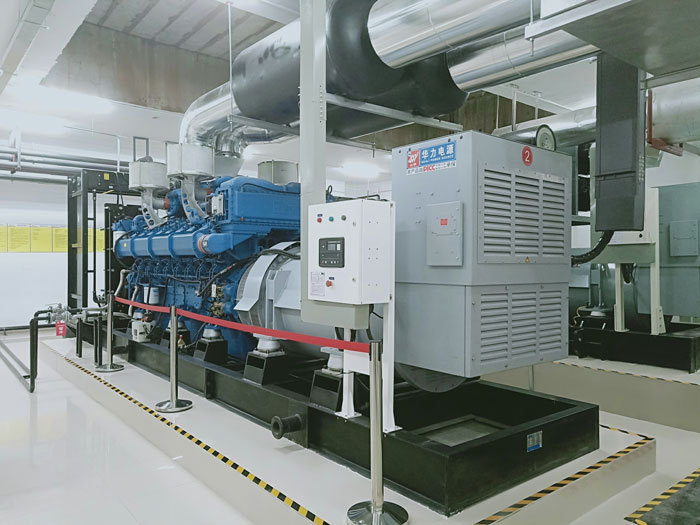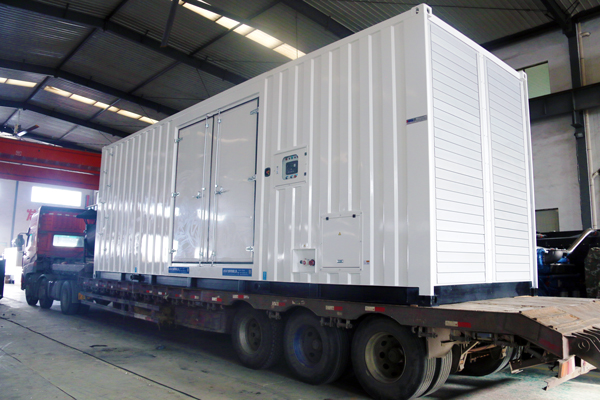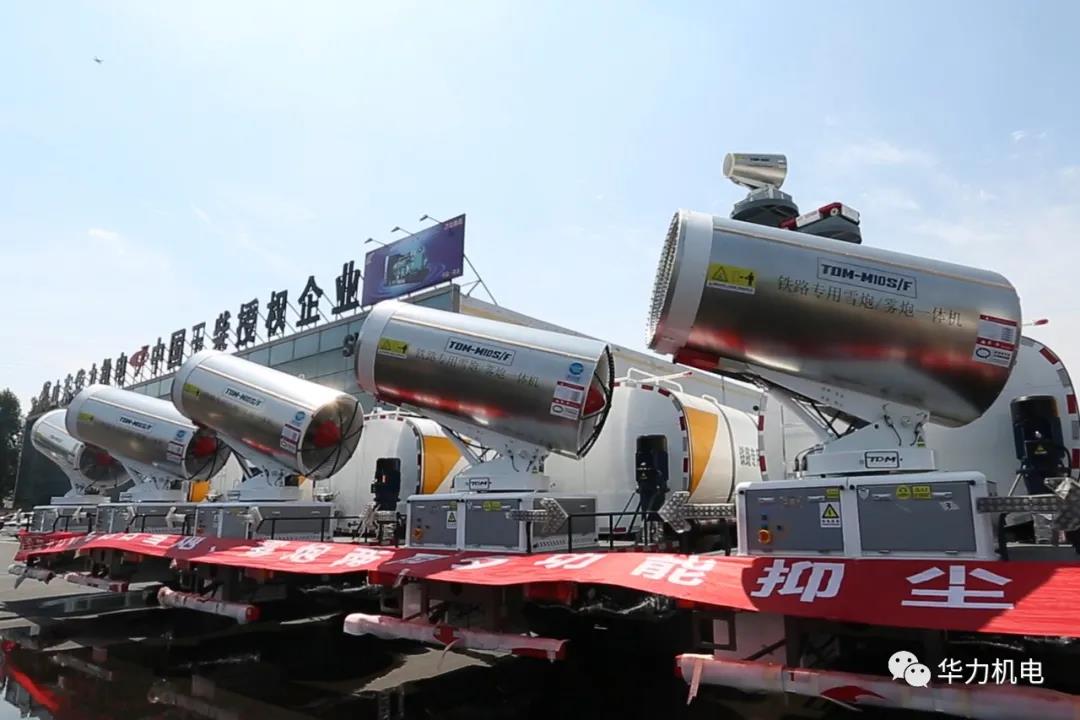How to judge the fault according to the exhaust color of diesel generator set?
How to judge the fault according to the exhaust color of diesel generator set?
Oct 29, 2022
After the diesel generator fuel oil is completely burned, when the load is slightly heavy, the normal exhaust color is generally light gray and dark gray. During the operation of the diesel engine, there are black smoke, white smoke, blue smoke and other abnormal phenomena, which indicates that the diesel engine has faults.

(1) Black smoke
Diesel fuel is a complex hydrocarbon. The unburned diesel fuel injected into the combustion chamber is decomposed at high temperature to form carbon black. The exhaust gas is discharged together with the exhaust gas to form black smoke. Black smoke is the manifestation of incomplete fuel combustion in the combustion chamber. The main influencing factors are as follows:
1. Wear of piston ring and cylinder liner
After the piston ring and cylinder liner are worn, the compression pressure is insufficient, so that at the end of the compression stroke of the cylinder, the normal proportion of mixed gas changes, so that the fuel burns in the oxygen free condition, resulting in carbon deposition.
2. Poor injector operation
The fuel injector does not atomize or drop oil, so that the fuel cannot be fully mixed with the air in the cylinder and cannot be fully burned. The black smoke phenomenon caused by the poor operation of the fuel injector is more obvious when the diesel engine is running at low speed. Because the intake swirl in the cylinder is weak at low speed, the possibility of oil droplets or oil jets being dispersed by the air flow is reduced and they stay for a long time, which makes it easier to form carbon black emissions.
3. Change of combustion chamber shape
The manufacturing quality of the combustion chamber shape does not meet the technical requirements, so that the compression residual gap is too large or too small, and the piston is installed incorrectly, which will change the combustion chamber shape, thus affecting the mixing quality of fuel and air, and worsening the fuel combustion conditions.
4. Improper adjustment of fuel supply advance angle
1) The fuel supply advance angle is too large, and the fuel is injected into the combustion chamber prematurely. Because the pressure and temperature in the cylinder are low at this time, the fuel cannot ignite and burn. When the piston moves upward, the cylinder reaches a constant pressure and temperature, and the combustible mixture burns.
2) The fuel supply advance angle is too small, and the fuel injected into the cylinder is too late. Some of the fuel is separated or discharged before it can form a combustible mixture. The fuel discharged with the exhaust gas is decomposed at high temperature, forming black smoke.
5. Excessive fuel supply
Excessive fuel supply will increase the amount of fuel entering the cylinder, resulting in incomplete combustion of more fuel, less gas and less fuel. In addition, heavy workload, poor fuel quality and low operating temperature will also cause black smoke.
(2) Blue smoke
The lubricating oil enters the cylinder and vaporizes into blue oil gas when heated. The blue smoke is discharged with the exhaust gas, mainly due to:
1. The air filter is blocked, the air intake is not smooth, or the oil level in the oil basin is too high (oil bath air filter).
2. The fuel is mixed with lubricating oil.
3. The piston rings are matched.
4. The cylinder gasket near the oil passage from the engine block to the cylinder head is burnt.
5. The piston ring, piston and cylinder liner are worn.
(3) White smoke
When the diesel engine is just started or cold, the exhaust pipe emits white smoke, which is caused by the evaporation of oil and gas with low temperature in the cylinder of the diesel engine. Especially in winter. If the exhaust pipe still emits white smoke when the engine is hot, it is judged as diesel engine fault. The main reasons are as follows:
1. The cylinder liner is cracked or the cylinder gasket is damaged. The cooling water enters the cylinder and forms water mist or steam when exhausting.
2. The atomization of the fuel injector is poor, and there is oil dripping.
3. The fuel supply advance angle is too small.
4. There is water and air in the fuel.
5. The pressure of the fuel injection pump is too low or the piston and cylinder liner are seriously worn, which causes insufficient compression force.
Diesel fuel is a complex hydrocarbon. The unburned diesel fuel injected into the combustion chamber is decomposed at high temperature to form carbon black. The exhaust gas is discharged together with the exhaust gas to form black smoke. Black smoke is the manifestation of incomplete fuel combustion in the combustion chamber. The main influencing factors are as follows:
1. Wear of piston ring and cylinder liner
After the piston ring and cylinder liner are worn, the compression pressure is insufficient, so that at the end of the compression stroke of the cylinder, the normal proportion of mixed gas changes, so that the fuel burns in the oxygen free condition, resulting in carbon deposition.
2. Poor injector operation
The fuel injector does not atomize or drop oil, so that the fuel cannot be fully mixed with the air in the cylinder and cannot be fully burned. The black smoke phenomenon caused by the poor operation of the fuel injector is more obvious when the diesel engine is running at low speed. Because the intake swirl in the cylinder is weak at low speed, the possibility of oil droplets or oil jets being dispersed by the air flow is reduced and they stay for a long time, which makes it easier to form carbon black emissions.
3. Change of combustion chamber shape
The manufacturing quality of the combustion chamber shape does not meet the technical requirements, so that the compression residual gap is too large or too small, and the piston is installed incorrectly, which will change the combustion chamber shape, thus affecting the mixing quality of fuel and air, and worsening the fuel combustion conditions.
4. Improper adjustment of fuel supply advance angle
1) The fuel supply advance angle is too large, and the fuel is injected into the combustion chamber prematurely. Because the pressure and temperature in the cylinder are low at this time, the fuel cannot ignite and burn. When the piston moves upward, the cylinder reaches a constant pressure and temperature, and the combustible mixture burns.
2) The fuel supply advance angle is too small, and the fuel injected into the cylinder is too late. Some of the fuel is separated or discharged before it can form a combustible mixture. The fuel discharged with the exhaust gas is decomposed at high temperature, forming black smoke.
5. Excessive fuel supply
Excessive fuel supply will increase the amount of fuel entering the cylinder, resulting in incomplete combustion of more fuel, less gas and less fuel. In addition, heavy workload, poor fuel quality and low operating temperature will also cause black smoke.
(2) Blue smoke
The lubricating oil enters the cylinder and vaporizes into blue oil gas when heated. The blue smoke is discharged with the exhaust gas, mainly due to:
1. The air filter is blocked, the air intake is not smooth, or the oil level in the oil basin is too high (oil bath air filter).
2. The fuel is mixed with lubricating oil.
3. The piston rings are matched.
4. The cylinder gasket near the oil passage from the engine block to the cylinder head is burnt.
5. The piston ring, piston and cylinder liner are worn.
(3) White smoke
When the diesel engine is just started or cold, the exhaust pipe emits white smoke, which is caused by the evaporation of oil and gas with low temperature in the cylinder of the diesel engine. Especially in winter. If the exhaust pipe still emits white smoke when the engine is hot, it is judged as diesel engine fault. The main reasons are as follows:
1. The cylinder liner is cracked or the cylinder gasket is damaged. The cooling water enters the cylinder and forms water mist or steam when exhausting.
2. The atomization of the fuel injector is poor, and there is oil dripping.
3. The fuel supply advance angle is too small.
4. There is water and air in the fuel.
5. The pressure of the fuel injection pump is too low or the piston and cylinder liner are seriously worn, which causes insufficient compression force.

News Center
Hot Product
Hot News







